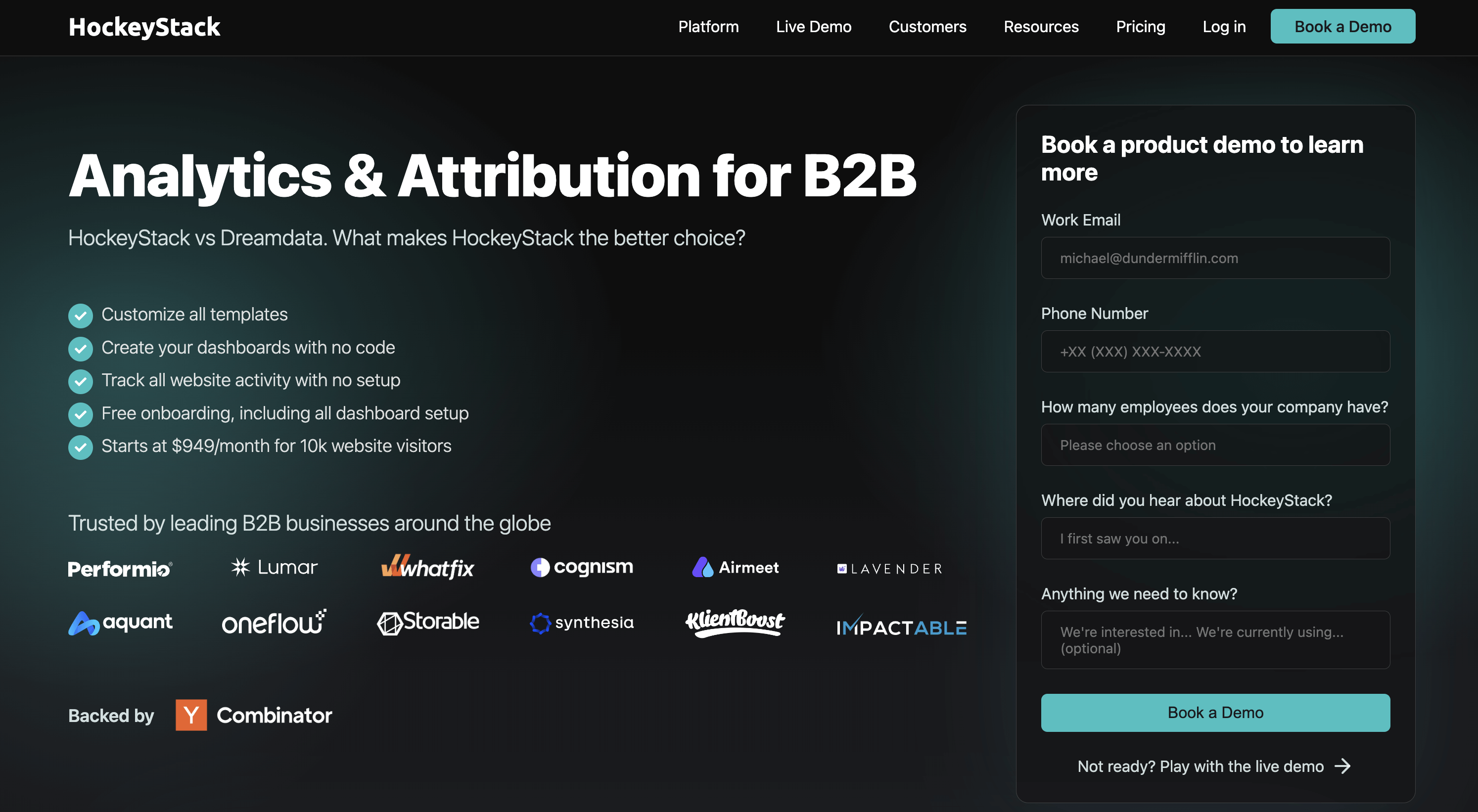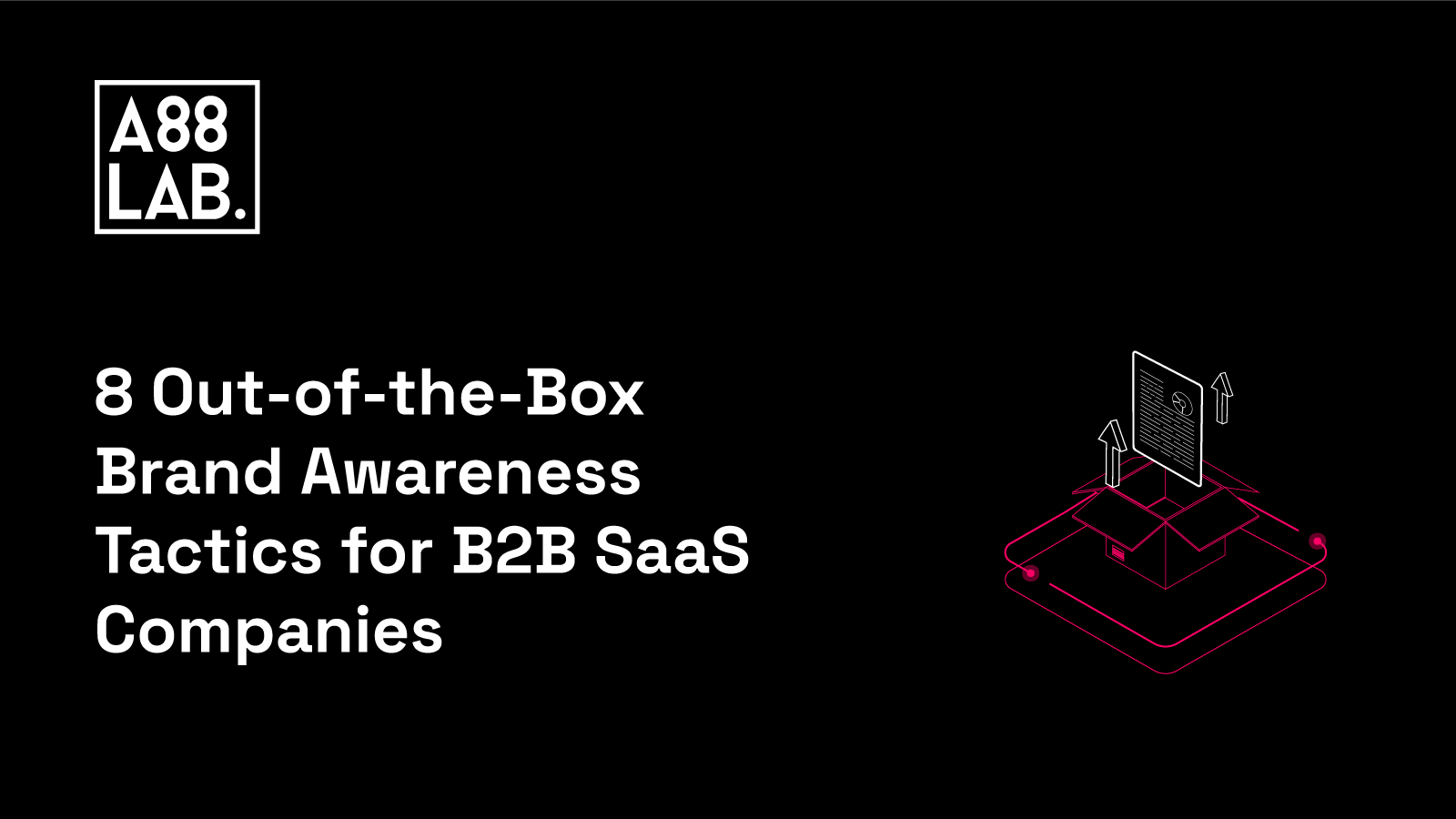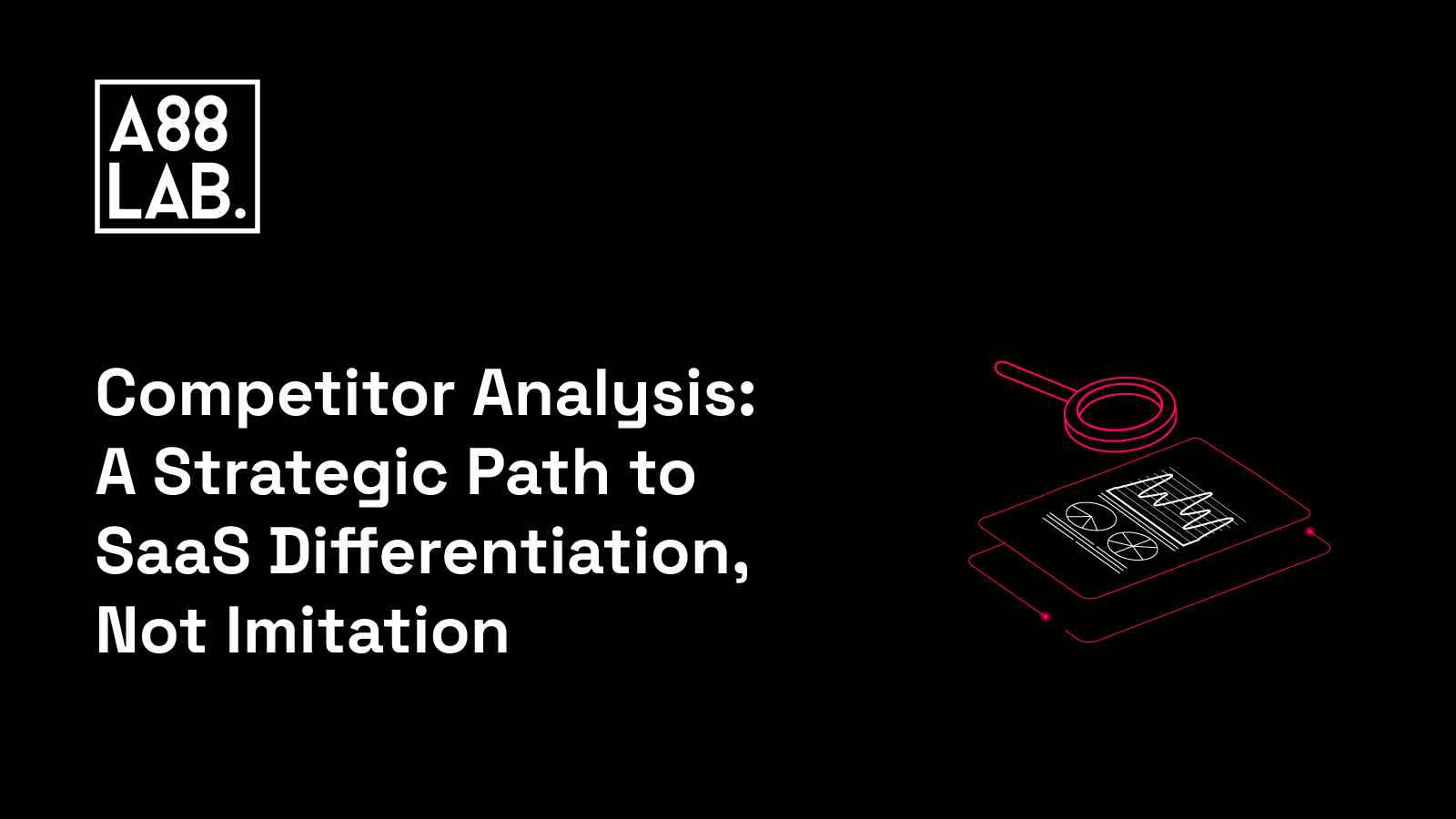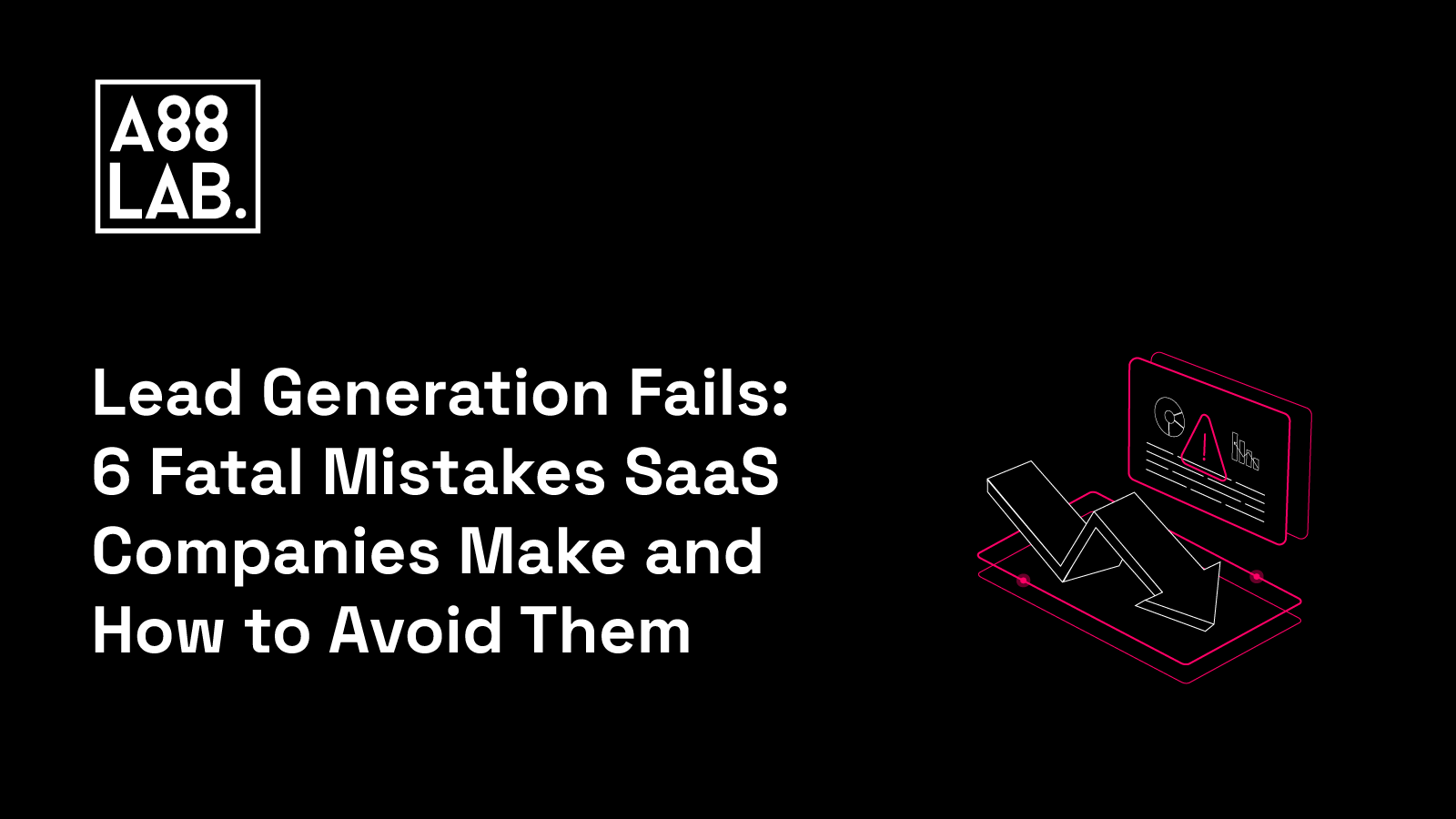With the SaaS industry continuously expanding and technology transforming businesses, the race to build recognition and win over potential clients intensifies. Nowadays, generating demand and increasing the number of customers requires stepping a bit outside of the comfort zone, as conventional brand awareness strategies are often not enough to set you apart.
So why not come up with some out-of-the-box tactics instead? By that, we mean implementing innovative, unexpected, or bold approaches to redefine how your brand connects with its target audience. Think of them as creative and unique ways to help your brand stand out and become more memorable.
In this blog post, we will discuss examples of eight out-of-the-box strategies your B2B SaaS can start implementing today. Hopefully, they will inspire you to find additional ways to get your brand noticed. So, let’s get started!
1. Build Pages on Third-Party Review and Comparison Websites
Think about the modern buying process for a second. From G2 to Capterra, third-party review websites have become vital to the customer journey. You can bet almost every potential customer will do their due diligence and look you up on such websites instead of jumping on demo calls or signing up for the service immediately.
Creating your own page on these platforms can be beneficial for two reasons: first, it will help potential customers find you more easily and increase chances of conversion; second, it will give them an honest and unbiased opinion from existing clients. This is especially important when we talk about B2B SaaS companies that offer services that require trustworthiness and reliability.
Now, you may not be able to control what customers write about your product in reviews, but you can certainly influence how they perceive it by optimizing your presence on popular platforms such as G2, Capterra, Product Hunt, Trustpilot, TrustRadius, where buyers compare vendors when looking for new technologies.
Set up your page on the platforms that suit your product best and make sure you craft a really good story about it. Implementing great storytelling that emphasizes your advantages and capabilities will influence the prospects’ purchasing decisions and convince them to pick your product over those offered by your competitors.
2. Run Ads on Third-Party Review Websites Such as Capterra or Product Hunt
While we're on the topic of third-party review websites, it's also worth mentioning you can use them as advertising channels. Running ads on review and comparison websites is a great way to drum up more interest and attention for your brand. Just ensure that the adverts you create are well-crafted, eye-catching, and relevant to your target audience.
Unlike advertising on LinkedIn or Google Ads, where you target people who may not be actively looking for a service like yours, ads on review platforms target potential customers who are already in the consideration phase. That means they're more likely to convert if you can provide them with useful content and user reviews.
It's also worth noting that ads on these platforms tend to be cheaper than campaigns run on the big advertising channels, making them an attractive option for cash-strapped startups and small businesses.
3. Build Competitor Comparison Pages on Your Website
Why? Because that's what your prospects are looking for. The SaaS industry can feel strikingly similar, and customers are constantly bombarded with countless software solutions - each claiming to be the "best."
By creating a comparison page on your website, you'll be able to clearly and concisely explain how your software stands out from the competition - giving prospects more clarity in their decision-making process. Plus, it will give them an easy way to learn more about what features and benefits you offer.
Here's an example of how HockeyStack does it:

Often, we bring up creating competitor comparison pages to our clients, and their first instinct is to say they don't want to badmouth or provide any visibility to their competitors. But your customers are already visiting those competitors' websites and comparing their products - so wouldn't it make sense to present your own side of the story?
Additionally, competitor comparison landing pages are not about bashing other products or resorting to mudslinging. Instead, they're focused on helping prospects make an informed decision. They save users the time and effort of researching various software options, addressing the customers' pain points, and creating a strong appeal that's hard to resist.
4. Run a Topic-Related Podcast (Instead of a Product-Related One)
We know, podcasts are not a new concept. But they're becoming increasingly popular, and there's a ton of potential when it comes to brand awareness. They provide an excellent opportunity to reach your target audience with interesting content, position yourself as an expert in the field, network with other industry professionals, and build relationships with customers and partners.
But rather than creating a podcast that focuses on your product or service, how about one related to your industry? For example, if you offer SaaS solutions for financial businesses, why not host a weekly or bi-weekly show talking about news and trends in the finance world?
Create episodes that can be divided into subtopics, exploring challenges, solutions, case studies, and future trends relevant to your industry. Keep a consistent release schedule and promote your podcast across various platforms while tracking metrics to improve content quality and showcase industry professionals to highlight your expertise.
Not only would this help spread awareness of your brand, but it would also give you a platform to express your views and help build relationships. If you're struggling with resources, or you simply don't think a host role is for you, there are plenty of guest-based podcasts that you can join in on.
5. Content. A Lot of Ungated Content.
Content marketing is (still) one of the most effective methods for building brand awareness and the cornerstone of any B2B SaaS marketing strategy. Create content for different stages of the funnel and customer journey, publish it consistently, and ensure it's optimized for search.
But rather than gating your content hoping to capture leads, provide high-quality, ungated assets that will capture attention and invite organic shares. Content should be designed to educate your target audience, provide helpful information, and establish authority in your field.
Here are a few suggestions for ungated content you can create for various stages of the funnel:
Engaging Blog Posts - Regularly post engaging, informative, and SEO-friendly blog articles on your website. These are perfect for all stages of the funnel, driving initial interest in the awareness stage, providing detailed insights in the consideration stage, and reinforcing the decision in the conversion stage.
Comprehensive Industry Reports - Create detailed industry reports that examine the latest trends, difficulties, and prospects in your field. These reports are appreciated by readers looking for a more in-depth insight into their chosen industry.
Infographics and Visuals - Create engaging visuals, infographics, slide presentations, and videos to present complex topics in an easy-to-understand format. They can be used to educate the audience about a particular topic or product feature.
How-to Guides and Tutorials - Develop simple guides explaining how to use your SaaS product to solve common problems and highlight its benefits. They are especially helpful for potential customers in the awareness and consideration stages, as they demonstrate the value of your product.
Best Practices eBooks - Make a series of eBooks offering advice on improving processes, efficiency, and results with your SaaS solution. These are great for demonstrating your expertise and authority in the industry.
Case Studies - Share real client success stories, including challenges, solutions, and outcomes achieved. Prospects in all funnel stages appreciate the details and real-world examples.
Whitepapers - Once in a while, develop and promote an in-depth whitepaper that dives deeper into technical details or a specific topic. Customers in the consideration stage and decision stages often want to know more about the technical aspects of a product, and a whitepaper can help to provide this information.
Live Webinars and Sessions - Host online events on relevant industry topics. Invite industry experts, customers, or partners to take part in these sessions and share their experiences with the audience.
Expert Interviews - Conduct interviews with industry experts, both internal and external, to shed light on trends, challenges, and innovative solutions.
Checklists and Templates - Develop practical checklists and customizable templates, helping clients streamline processes and achieve goals using your SaaS solution.
As you can see, creating content doesn't just mean writing blogs or social media posts. There are many creative ways to increase brand awareness and reach your prospect more effectively. Don't be afraid to experiment with different kinds of content and try out different strategies. By keeping your content free from gated forms and relevant to your target audience, you'll be able to build visibility and generate demand for your SaaS.
6. Don’t Forget About Word-of-Mouth Marketing
Next to the rise of dark funnel and review websites, word-of-mouth marketing is still one of the most effective strategies for building brand awareness and gaining more customers.
-
92% of consumers believe in suggestions from friends and family more than advertising.
-
88% of people trust online reviews written by other consumers as much as they trust recommendations from personal contacts.
-
74% of consumers identify word of mouth as a key influencer in their purchasing decisions.
To take advantage of WOMM, you need to start by providing excellent customer service and creating positive experiences for your customers. If you can do that, they'll be sure to recommend your product or service to their family and friends - who may then become potential customers for you.
Here are some additional things you can do to get the WOM ball rolling:
- Social media buzz - Engage in dialogue on social media, particularly on LinkedIn, Facebook, and Twitter. Join groups, connect with prospects, share user-generated content, and publish your own to start conversations.
- Ask for reviews - Since 88% of people trust online reviews, take advantage of those sites we suggested you build, reach out to your existing customer database and ask them to leave honest reviews.
- Giveaways/competitions - Incentivize customers to share their experiences with your product or service on social media by offering rewards or giveaways.
- Affiliate programs - Let your customers earn money by promoting your product. They will be incentivized to spread the word, and you'll benefit from increased brand visibility.
While WOMM isn't as tangible or immediate as some other brand awareness strategies, it's perhaps the most effective in driving long-term results. But for it to work, you must focus on delivering value, building customer relationships, encouraging positive conversations, and creating compelling content that resonates with your target audience. Without it, you won't be able to develop a strong network of customers who can help take your brand awareness further.
7. Unconventional Influencer Partnerships
The influencer marketing space is growing rapidly, becoming one of the most popular brand awareness strategies for B2B SaaS companies. The more unique your approach to influencers, the more effective your campaigns will be.
Rather than going straight for celebrities with huge followings, consider partnering with micro-influencers who specialize in your niche and have an engaged audience. This allows you to tap into a highly targeted market and get quality leads from people already interested in your products or services.
You can also look at unconventional partnerships like collaborating with journalists, bloggers, and other industry influencers.
For example, if you're a project management SaaS company, collaborating with a lifestyle influencer who emphasizes organization and time management in their content can introduce your solution to an audience seeking productivity tips. Similarly, partnering with a tech-savvy artist to showcase how your CRM software streamlines their client interactions can demonstrate the versatility of your product.
Unconventional influencer partnerships are all about thinking outside the box and using the influence of personalities who can bring a fresh perspective to your brand. This strategy adds an element of novelty and surprise to your brand awareness efforts, helping your B2B SaaS company stand out in a crowded market.
In addition to these creative, unconventional partnerships, consider identifying key influencers or thought leaders in your industry and collaborating with them on content, co-hosting webinars, or participating in panel discussions. Their endorsement can significantly boost your brand's credibility and reach.
8. Host Virtual Roundtable Discussions and Hackatons
Roundtable discussions, or panels, bring together a group of experts to discuss the latest industry trends and solutions. By organizing a virtual roundtable event, you can demonstrate your company's leadership in the industry and provide valuable insights to prospects in an engaging format.
Start by identifying a few industry thought leaders or influencers who can provide an objective overview of the latest trends. Invite them to a virtual roundtable discussion and let your audience ask questions or comment in real time.
You can promote these discussions across various platforms, including social media, industry forums, and your company's website, attracting a diverse audience interested in the subject matter.
Recording and sharing the sessions afterward provides ongoing value and enables those who missed the live event to benefit from the insights shared. This contributes to your brand's growth by establishing your authority, expanding your network, and elevating your brand's awareness within the B2B SaaS landscape.
Similarly, hackathons are a great way to build relationships with potential customers while showcasing your product's capabilities. By encouraging participants to use your platform to develop new ideas or solve existing challenges, you can demonstrate how your software can work for them in the real world. Plus, participants will be more likely to recommend your product after having a positive experience engaging with it.
Organizing a hackathon is relatively straightforward — just make sure you set clear rules and establish comprehensive judging criteria for the event. Whether part of a larger industry event or a standalone occasion, hackathons can effectively boost your brand awareness.
Finally, think of them as more than promotion. A good hackathon grows exposure, innovation, and community - all things that matter in the tech landscape.
Conclusion
As you can see, creating a buzz and gaining exposure for B2B SaaS companies doesn't have to stop with paid ads or traditional marketing tactics. There are plenty of out-of-the-box strategies that can work wonders when it comes to elevating your brand’s visibility and making a lasting impression.
From webinars to hackathons, the possibilities are endless — all you need is a little creativity and an open mind to find new ways to get your message across to the right people. So, don’t be afraid to try something new and explore the innovative approaches to brand awareness that are available to you. You never know what kind of success your strategy might bring.
.png)


